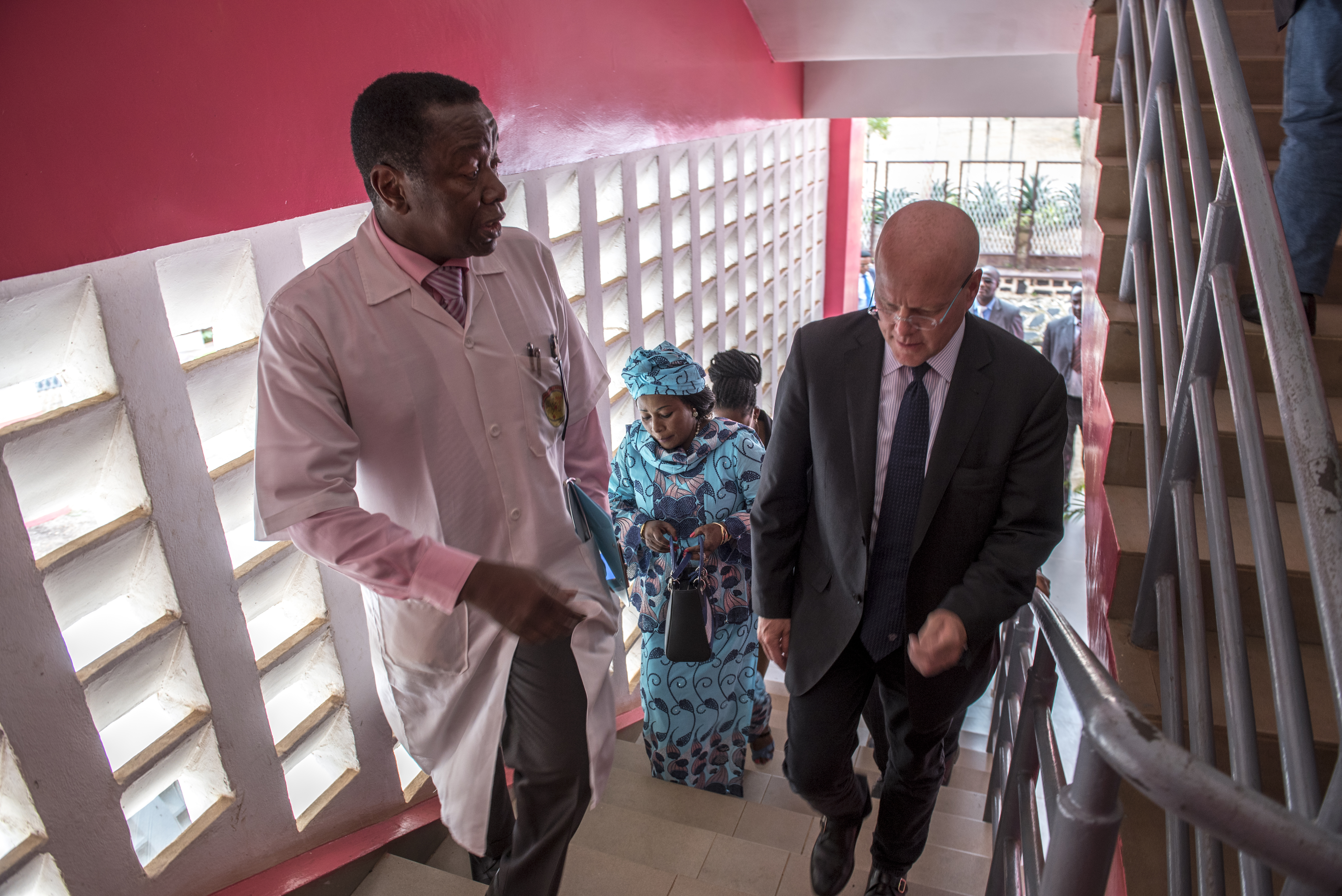EGPAF Quickens Its Pace in Cameroon
In July 2016, Chip Lyons, the president of the Elizabeth Glaser Pediatric AIDS Foundation (EGPAF), traveled to Cameroon, for the ribbon cutting of a new office in Youndé, the capital city. EGPAF began working in Cameroon in 2000, with the historic Call to Action initiative that greatly expanded support for HIV prevention and treatment in the countries hardest hit by the pandemic.
Cameroon is a country of contrasts, from its Atlantic coastline to its western rainforests to its northern deserts. The official languages are French and English, with more than 1,700 traditional idioms. These geographic and cultural differences sometimes thwart efforts to deliver government services effectively. However, national response to the HIV epidemic—with support from organizations like the Elizabeth Glaser Pediatric AIDS Foundation (EGPAF)—has helped unify the public health system and deliver health services to more people.
In 2000, EGPAF supported the first five prevention of mother-to-child transmission of HIV (PMTCT) health facilities in Cameroon—in partnership with Cameroon Baptist Convention Health Services (CBCHS). In 2002, EGPAF helped fund and coordinate the first national PMTCT conference in Cameroon, which led to the development of national PMTCT and pediatric HIV policy for Cameroon. Now EGPAF and CBCHS together support PMTCT services at 458 facilities across six regions (out of 10).

“We are proud of the enormous impact and progress these joint efforts have realized,” said EGPAF President Charles Lyons at the ribbon cutting. “Together, we have provided PMTCT services to more than 994,800 women and tested nearly the same number of pregnant women for HIV.”
Still, Cameroon has the highest HIV prevalence rate in central Africa, with 7.6 percent of pregnant women infected with the virus. Forty-six percent of women and 58 percent of men have never been tested for HIV, putting not only their own lives in danger, but the lives of their unborn children as well.
But change is coming quickly. The HIV infection rate is half of what it was five years ago. Now EGPAF and partners are sprinting toward the goal of zero new infections in children by 2020. Through funding from the U.S. Centers for Disease Control and Prevention (CDC), EGPAF has assembled a new team of HIV experts in Cameroon to lead technical assistance initiatives and amplify support to the government and other partners.
For example, EGPAF has established a training center at the Fondation Chantal Biya Mother-Child Centre in Youndé to ramp up capacity of health workers from around the country to diagnose, treat, and track clients living with HIV. In rural Bamenda, eight long hours from the capital, EGPAF is increasing the capacity of health facilities by training health workers, linkage officers, and lab technicians and placing them at crucial points of care. This allows medical staff to focus on treating clients with the assurance that those clients are being linked to the services they need and are followed to ensure adherence to treatment.

During the week prior to the launch of EGPAF’s new office, Lyons met with Youndé-based representatives from the Ministry of Public Health, UNAIDS, UNICEF, and other national and global partners. He also toured the Fondation Chantal Biya Mother-Child Centre for a direct view of the benefits of EGPAF’s technical assistance. On Friday, representatives from prominent health organizations gathered at the EGPAF office to re-inaugurate EGPAF’s work in Cameroon.
“EGPAF knows well the path that Cameroon has taken to arrive at this stage,” remarked Alim Hayatou, the secretary of state to the Ministry of Public Health in charge of epidemics and pandemics. “In this fight against AIDS, we have been side by side, day after day, action by action to improve the situation at hand. We are delighted to have EGPAF’s support.
“Cameroon is steadfast in our resolve to eliminate pediatric AIDS,” declared Sec. Hayatou.
Lyons was equally emphatic.
“I can say with confidence that our commitment has never been stronger to arriving at a future when every child, mother, family, and community in Cameroon is free of HIV,” said Lyons. “We can eliminate new HIV infections among children in Cameroon by reducing the number of children newly infected to less than 40,000 by 2018 and 20,000 by 2020. We can provide 1.6 million HIV-infected children with antiretroviral therapy by 2018.”
“Together, through the strength of the partnerships and bonds we’ve built, we can realize the end of AIDS in Cameroon,” said Lyons.
“The time to act is now.”
Team EGPAF
Cameroon
General


